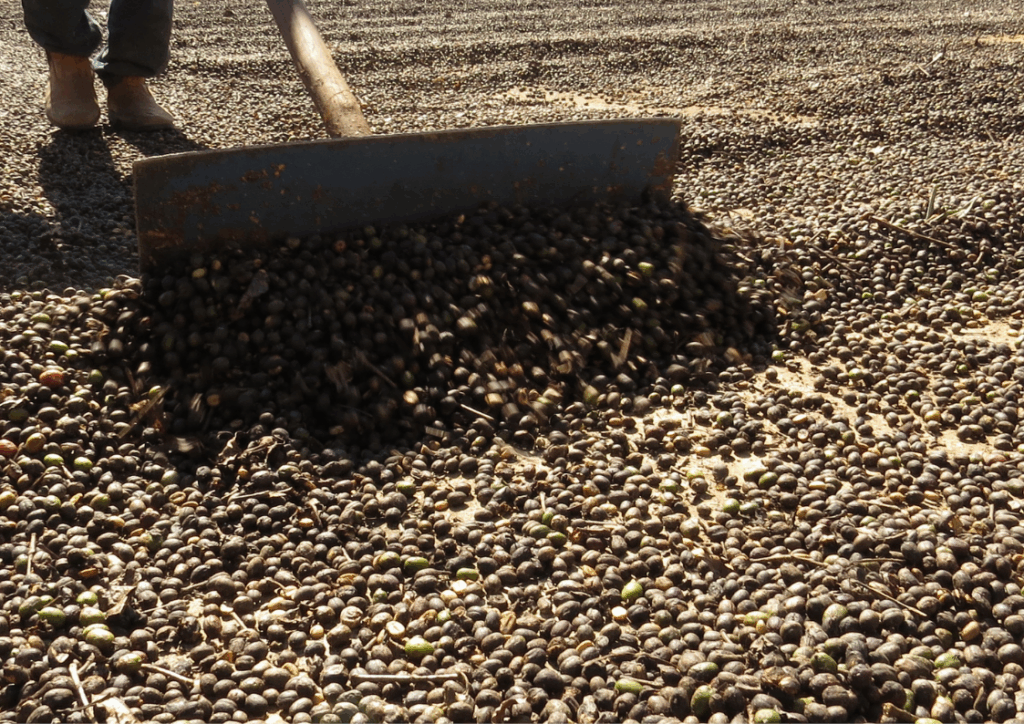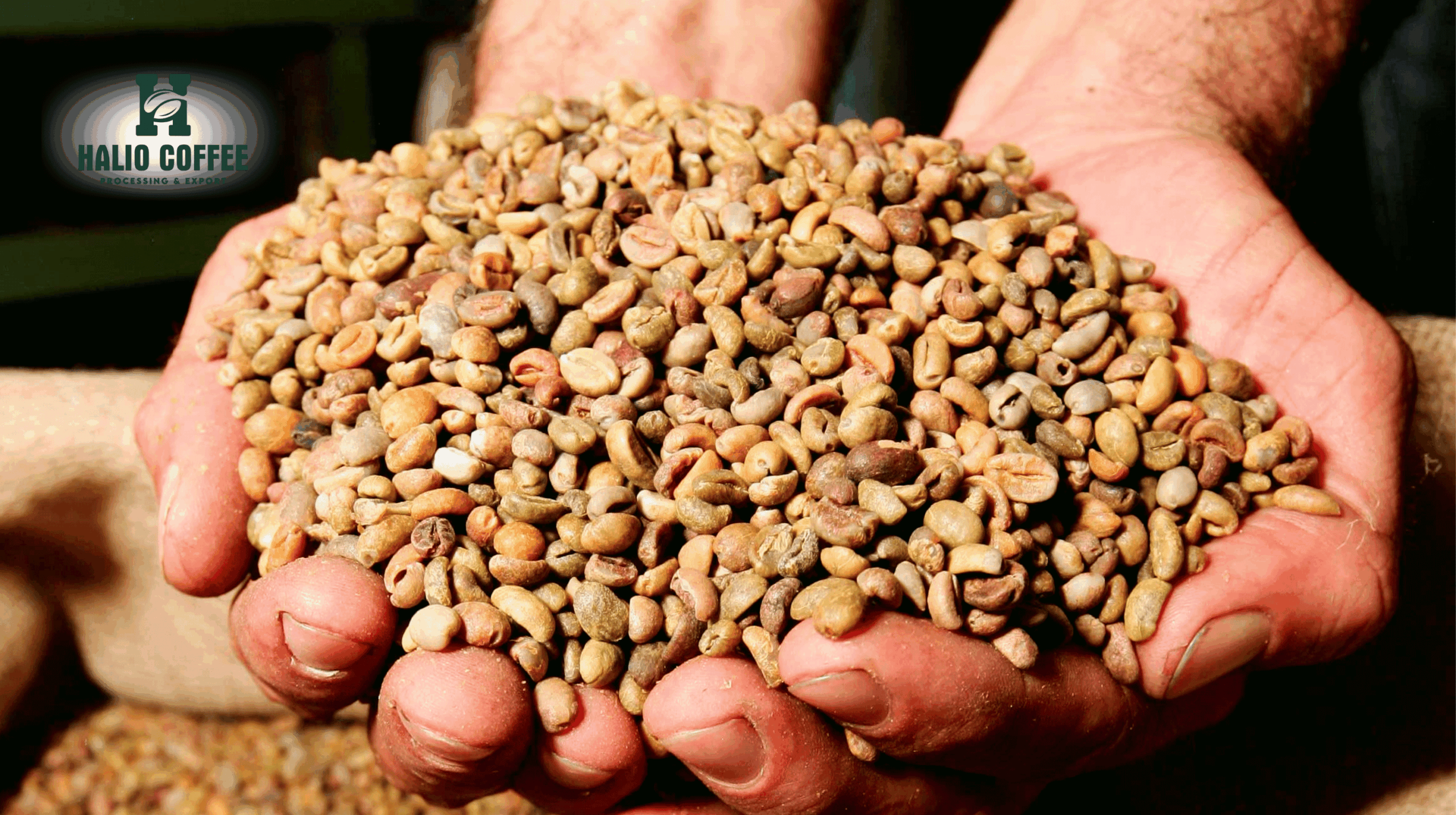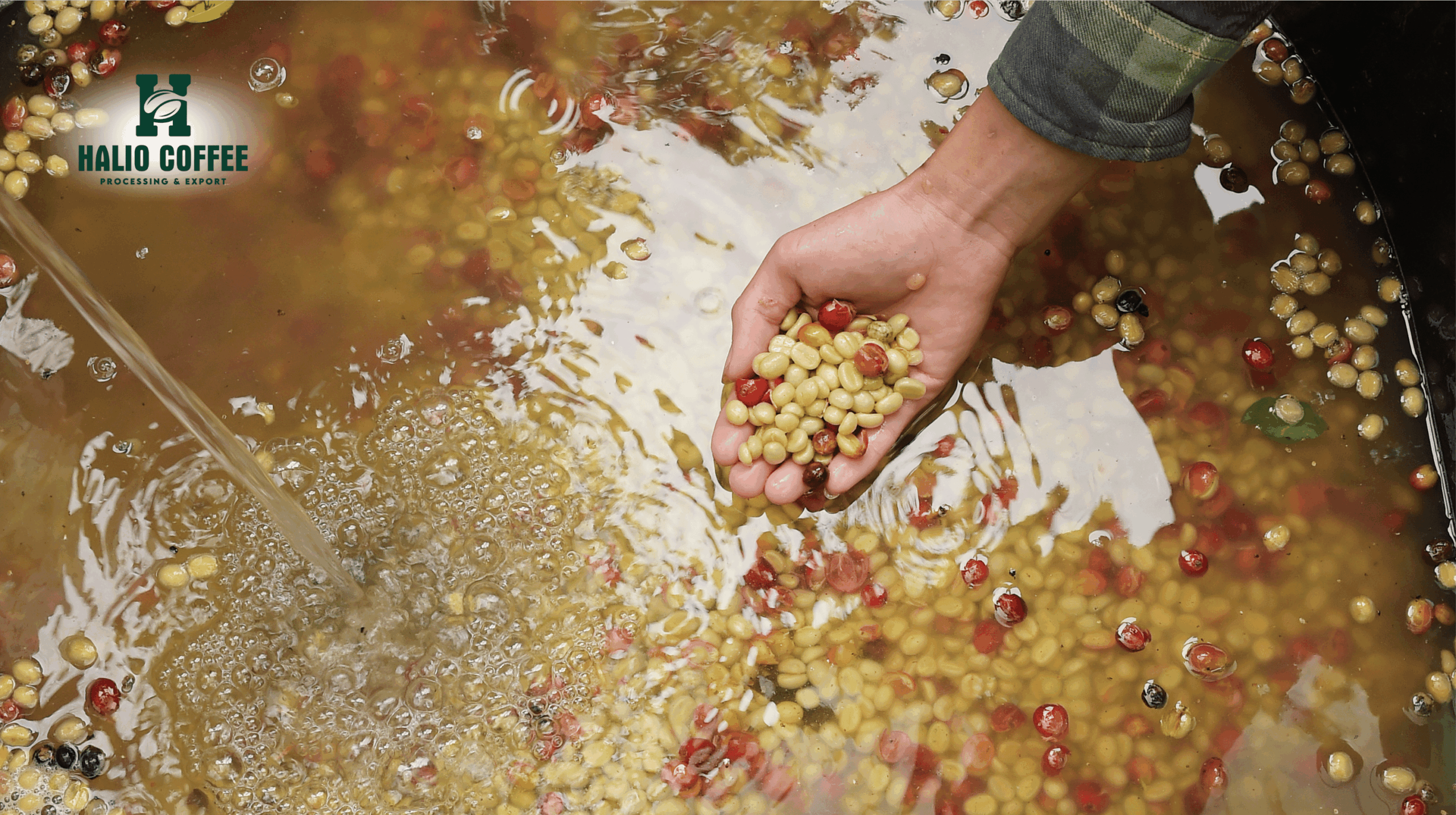Sun-Dried Robusta Coffee Beans: An In-Depth Industry Guide for Producers, Roasters, and Distributors
The global coffee industry is undergoing rapid transformation. For decades, arabica has dominated the spotlight in specialty coffee circles, while robusta has been treated primarily as a commodity crop used in blends and instant coffee. However, as market dynamics evolve and new processing techniques improve quality, Sun-Dried Robusta Coffee Beans are carving out a distinct identity in both mainstream and specialty segments.
Vietnam, the world’s leading producer and exporter of robusta, plays a pivotal role in this transition. By refining sun-drying practices and strengthening post-harvest quality control, Vietnamese producers are elevating robusta from bulk commodity to premium product, enabling roasters and distributors worldwide to diversify their offerings.
This guide provides an extensive industry analysis of Sun-Dried Robusta Coffee Beans, offering insights tailored for coffee producers, international roasters, and distributors. It covers production trends, technical processes, consumer shifts, and market data, while also drawing connections to the rising demand for Whole Bean Coffee.
Vietnam’s Global Position in Coffee Production
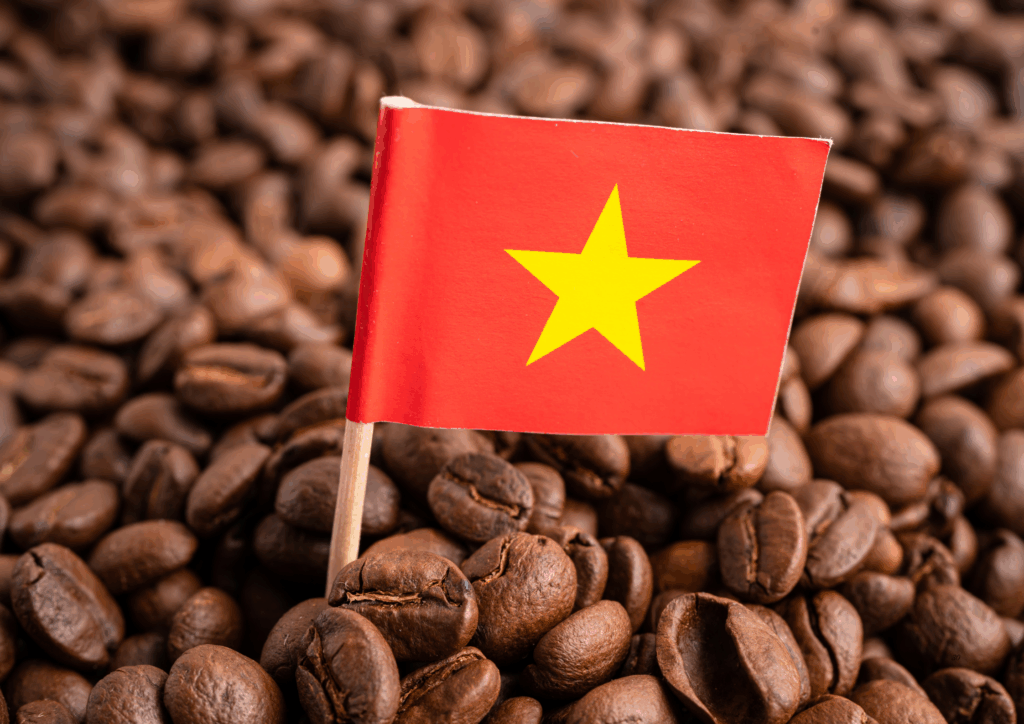
Scale and Market Importance
- Vietnam is the second-largest coffee producer in the world, after Brazil.
- It supplies 40–42% of global robusta exports annually.
- Coffee accounts for approximately 10% of Vietnam’s total agricultural export revenue, generating $3.5–4 billion annually.
According to the International Coffee Organization (ICO, 2024), Vietnam produced around 28 million 60-kg bags of coffee last year, with over 90% being robusta.
Export Markets
- European Union: Nearly 47% of Vietnam’s coffee exports.
- United States: Around 10%.
- Japan and South Korea: Combined 12%.
- Emerging markets: Middle East and Southeast Asia are increasing imports for both soluble and roast-and-ground coffee.
Vietnam’s consistent output makes it indispensable to roasters and distributors looking for reliable sources of robusta beans, particularly as global arabica production faces volatility due to climate stress in Brazil and Colombia.
See more:
- Dry Processed Robusta Beans
- High-Caffeine Natural Robusta
- Halio Coffee – Your Trusted Fresh Coffee Distributor of Robusta & Arabica Beans
What Are Sun-Dried Robusta Coffee Beans?
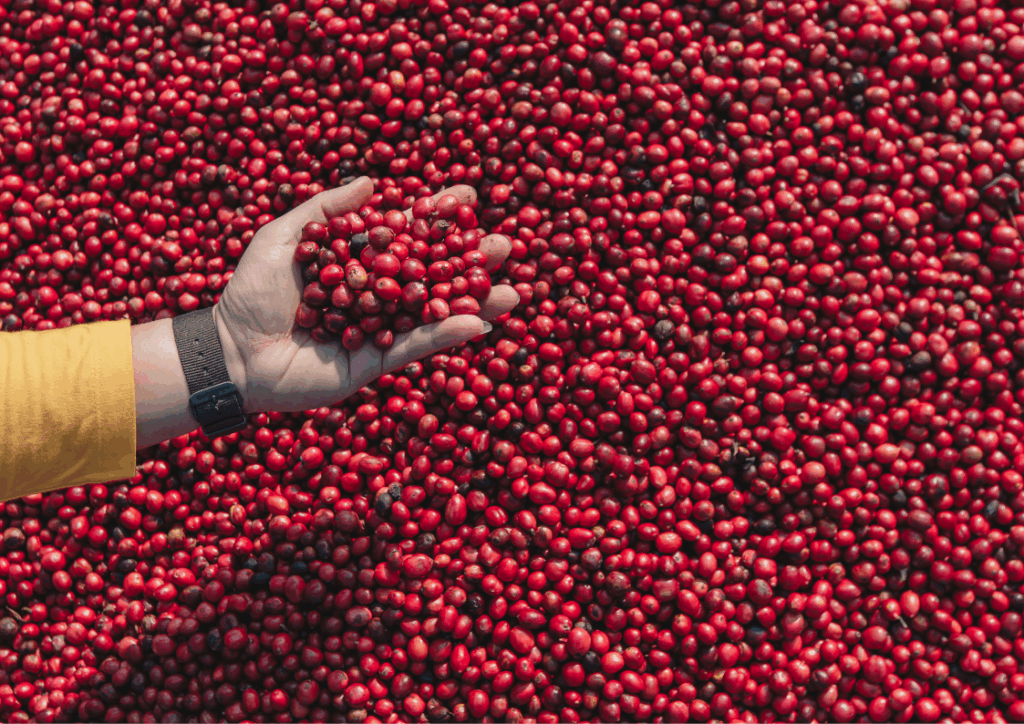
Defining Sun-Dried Processing
Sun-Dried Robusta Coffee Beans are produced through the natural (dry) process, one of the oldest coffee preparation techniques. Instead of using water to ferment and wash the cherries, producers rely on the sun to dry the whole fruit.
Steps in the sun-drying process:
- Select ripe cherries during harvest.
- Spread cherries on patios or raised drying beds.
- Turn them regularly to ensure even drying and prevent mold.
- Monitor until moisture content reaches 11–12%.
- Hull dried cherries to release the green beans.
This method is cost-efficient, environmentally friendly (minimal water usage), and—when done properly—produces robusta beans with distinctive flavor profiles.
Characteristics of Sun-Dried Robusta
- Flavor Profile: Heavy-bodied, bold, with chocolate, nutty, and dried fruit notes.
- Caffeine Content: Typically 2–2.7%, higher than arabica.
- Texture & Crema: Produces thick crema, making it highly desirable for espresso.
- Durability: Strong resistance to pests and better shelf stability.
For international roasters, these traits make sun-dried robusta an attractive option not just for blends but increasingly for single-origin Whole Bean Coffee offerings.
Advances in Vietnam’s Sun-Drying Practices
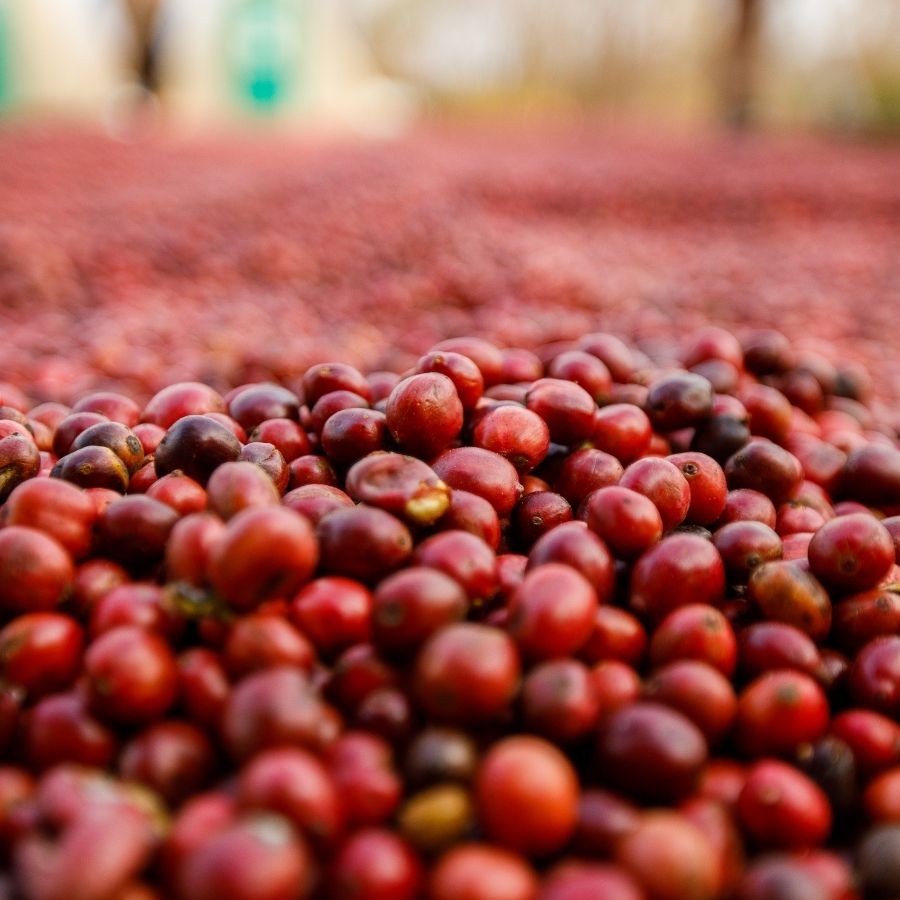
Traditional vs. Modern Drying
Historically, robusta cherries were dried directly on the ground, often leading to contamination and uneven quality. Today, modern practices are transforming outcomes:
- Raised-Bed Drying Coffee: Introduced across Vietnam’s Central Highlands (Dak Lak, Gia Lai, and Lam Dong), this technique ensures proper airflow and uniform drying.
- Moisture Monitoring: Use of portable digital meters to control final bean quality.
- Micro-Lots and Specialty Segments: Farmers and cooperatives are isolating small plots for improved natural processing, targeting premium buyers.
Institutional and Private Investments
- Nestlé’s Nescafé Plan: Training over 20,000 farmers in improved natural drying and sustainable agriculture.
- Vietnam Coffee and Cocoa Association (VICOFA): Promoting “Fine Robusta” certifications.
- Private Exporters: Companies like Simexco Dak Lak have invested in drying infrastructure to meet specialty demand.
Global Applications of Sun-Dried Robusta Coffee Beans
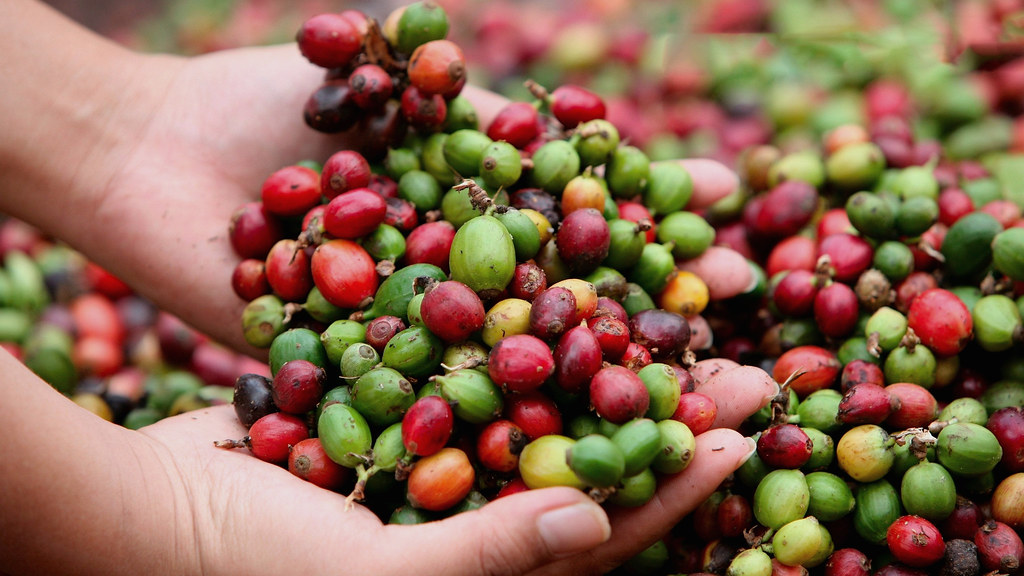
Espresso and Blends
Roasters in Italy, Spain, and Portugal have long relied on robusta for espresso blends. Sun-Dried Robusta Coffee Beans enhance crema, add strength, and lower blend costs while maintaining quality.
Instant and Soluble Coffee
Over 70% of the world’s instant coffee is produced with robusta. Sun-dried beans are ideal for this segment due to their solubility and bold flavor retention after processing.
Specialty Market
The specialty sector has begun recognizing Fine Robusta. High-quality sun-dried robusta scoring above 80 points on the SCA scale is now exported to Europe, the U.S., and Japan, with buyers marketing it as exotic and distinctive.
Market Data and Industry Statistics
Global Coffee Market
- Market Size (2024): $132 billion (Statista).
- Projected CAGR (2024–2029): 4.5%.
- Robusta Growth: CAGR of 3–4%, outpacing arabica in emerging markets.
Pricing Trends
- Arabica (NY ICE, July 2024): 190–200 US cents/lb.
- Robusta (London ICE, July 2024): $3,900–4,200/ton.
- Fine Robusta Premiums: +20–30% above commodity robusta, depending on cupping score and traceability.
Consumer Behavior
- Whole Bean Coffee Demand: Rising in North America and Europe as consumers invest in grinders for home brewing.
- Robusta Acceptance: Younger demographics are more open to experimenting with robusta-based coffees, particularly those marketed as sustainable and farmer-traceable.
Case Studies
Case Study 1: Dak Lak Specialty Cooperatives
Smallholder cooperatives in Dak Lak adopted raised-bed sun-drying for select robusta lots. These beans achieved 82 SCA points and were exported to specialty roasters in Germany and South Korea at a 25% price premium.
Case Study 2: Black Sheep Coffee (UK)
This London-based chain markets itself around 100% robusta espresso, sourcing directly from Vietnam. Their use of Sun-Dried Robusta Coffee Beans has allowed them to differentiate from competitors while appealing to adventurous coffee consumers.
Case Study 3: Nestlé Vietnam
Nestlé sources over 20% of its global robusta needs from Vietnam. By working directly with farmers on natural drying methods, Nestlé ensures consistent supply for both soluble coffee and roast-and-ground blends while boosting farmer incomes.
Opportunities for Stakeholders
For Producers in Vietnam
- Expand sun-drying with raised-bed systems for higher-quality output.
- Target specialty buyers willing to pay premiums for traceable and naturally processed robusta.
- Explore certification schemes (Rainforest Alliance, Fair Trade) to access higher-value markets.
For International Roasters
- Incorporate Sun-Dried Robusta Coffee Beans in espresso blends to balance costs and flavor.
- Experiment with single-origin robusta for Whole Bean Coffee portfolios.
- Leverage robusta’s story (strength, sustainability, and heritage) in marketing campaigns.
For Distributors
- Secure supply contracts with Vietnamese exporters to hedge against arabica price volatility.
- Invest in storage facilities to maintain bean quality in humid or fluctuating climates.
- Explore opportunities in emerging robusta-focused markets in Asia and the Middle East.
Technical Considerations in Sun-Dried Processing
Climate Requirements
- Ideal drying climate: low humidity, consistent sun exposure.
- Vietnam’s Central Highlands offer a dry season (December–March) suitable for sun-drying large volumes.
Quality Control Challenges
- Moisture Variability: Uneven drying can lead to mold and defects.
- Fermentation Control: Over-fermentation produces off-flavors.
- Labor Intensity: Requires constant turning and monitoring of cherries.
Innovations in Practice
- Use of solar dryers with UV-resistant covers.
- Digital traceability systems (QR codes linking beans to farm/lot).
- Hybrid drying: Combining patio drying with mechanical dryers during unpredictable weather.
Data Snapshot: Sun-Dried Robusta Coffee Beans
- Vietnam’s share of global robusta exports: 40–42%.
- Annual output (2024): 1.6–1.8 million metric tons.
- Cupping Scores: 75–83 points for well-processed sun-dried robusta.
- Top Buyers: EU (Germany, Italy, Spain), U.S., Japan, South Korea.
- Premiums: +20–30% above commodity robusta for Fine Robusta.
- Coffee Prices Today, Nov 26: Both Markets Rally Strongly; Robusta Surges Over $100/Ton
- Your Logistics Quarterback: A Consultant’s Guide to Choosing a Freight Forwarder for Coffee
- Coffee Price Today: Domestic Vietnam Market Hits Nearly 100,000 VND/kg, Despite Global Weakness
- Robusta Coffee Beans from Vietnam: A Global Powerhouse in the Coffee Supply Chain
- Coffee Prices Today, October 8th: Continue to Decline on Optimistic Signals from US-Brazil Trade Talks
